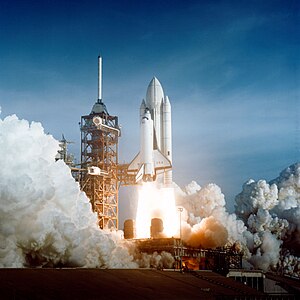Vehicle engineering
Vehicle engineering is a sub discipline of mechanical engineering that encompasses the fields of automotive engineering, aerospace engineering and marine engineering.
Automotive engineering[edit]
Automotive engineering is the design, manufacture and operation of motorcycles, automobiles and trucks and their respective engineering subsystems. The work of an automobile down into three categories:
Design: Designing new products and improving existing ones
Research and Development: Finding solutions to engineering problems
Production: Planning and designing new production processes
Aerospace engineering[edit]

Aerospace engineering [2] is the branch of engineering that deals with the design, development, testing, and production of aircraft and related systems (aeronautical engineering) and of spacecraft, missiles, rocket-propulsion systems, and other equipment operating beyond the earth's atmosphere (astronautical engineering).
Aeronautics[edit]
Definition[edit]
Aeronautics[3] is the study of the science of flight. Aeronautics is the method of designing an airplane or other flying machine. There are four basic areas that aeronautical engineers must understand in order to be able to design planes. To design a plane, engineers must understand all of these elements.
Design Process[edit]

- Aerodynamics[4]: is the study of how air flows around the airplane. By studying the way air flows around the plane the engineers can define the shape of the plane. The wings, the tail, and the main body or fuselage of the plane all affect the way the air will move around the plane.
- Propulsion: is the study of how to design an engine that will provide the thrust that is needed for a plane to take off and fly through the air. The engine provides the power for the airplane. The study of propulsion is what leads the engineers to determine the right kind of engine and the right amount of power that a plane will need
- Materials and Structures: is the study of what materials are to be used on the plane and in the engine and how those materials make the plane strong enough to fly effectively. The choice of materials that are used to make the fuselage wings, tail and engine will affect the strength and stability of the plane. Many airplane materials are now made out of composites, materials that are stronger than most metals and are lightweight.
- Stability and Control: is the study of how to control the speed, direction, altitude and other conditions that affect how a plane flies. The engineers design the controls that are needed in order to fly and instruments are provided for the pilot in the cockpit of the plane. The pilot uses these instruments to control the stability of the plane during flight.
Astronautics[edit]
Astronautics is the design and development of spacecraft with an emphasis on spacecraft systems (including launch vehicles, satellites, and their subsystems), the design of ground control systems for spacecraft, and the design of orbital mechanics for spacecraft missions.
[edit]
Naval architecture also known as Naval engineering is an engineering discipline dealing with the design, construction, maintenance and operation of marine vessels and structures.[5][6]
References[edit]
- ↑ "The Space Shuttle Program: Then and Now". Adaptive Radiation. 19 April 2010. Retrieved 2016-02-08.
- ↑ "the definition of aerospace-engineering". Dictionary.com. Retrieved 2016-02-08.
- ↑ Pansuriya, Dhairya (ed.). "Aeronautics". www.grc.nasa.gov. Retrieved 2016-02-08.
- ↑ Pansuriya, Dhairya (ed.). "Aerodynamics". Live Science.
- ↑ RINA – Careers in Naval Architecture
- ↑ Biran, Adrian; (2003). Ship hydrostatics and stability (1st Ed.) – Butterworth-Heinemann. ISBN 0-7506-4988-7 Search this book on
 .
.
This article "Vehicle engineering" is from Wikipedia. The list of its authors can be seen in its historical and/or the page Edithistory:Vehicle engineering. Articles copied from Draft Namespace on Wikipedia could be seen on the Draft Namespace of Wikipedia and not main one.

|
This page exists already on Wikipedia. |
